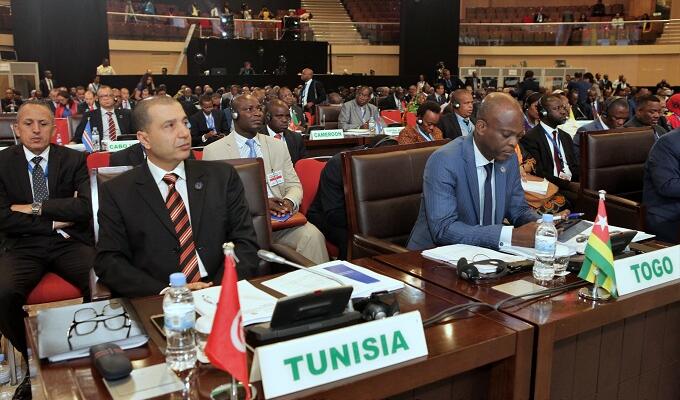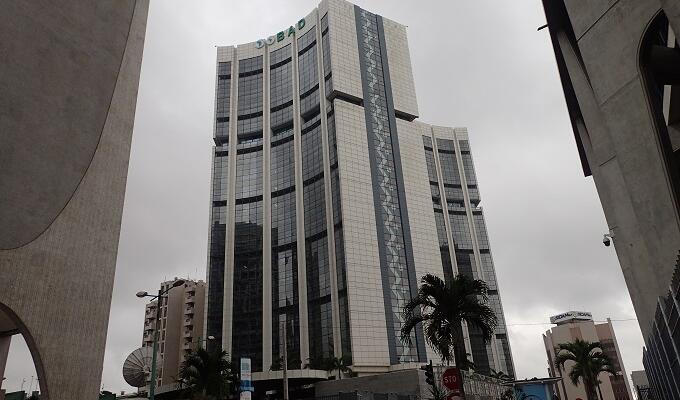


Financing and promoting African investments
Creating partnerships, improving governance and mitigating risk can help make the continent more attractive to business interests
Much is made about poverty in Africa, notwithstanding improvements in some countries in recent years in terms of GDP, incomes, exports, middle class growth, and a mix of health and social indicators. However, even with some progress, Africa is punching well below its weight when considering it is a continent of 1.2 billion people with vast resources. The success of many Africans abroad adds to the question of what has gone awry in Africa, and what can be done to right the course.
While the answers are complicated and often rooted in a disruptive colonial legacy, much of what bogs down modern Africa is how distant it remains from some of the earlier pan-African visions that inspired the wave of national independence in the 1950s-1960s.
Independence begot a surge of nationalism that translated into factionalism and division across the continent, undermining the ability of newly independent states to build the literal and figurative bridges needed to achieve broadly distributed wealth. Instead, barriers went up, monopolies ensued, and African economies were unable to distinguish themselves in global markets as niche or volume producers of anything but primary resources. In the process, and being small in most cases, African countries were unable to build up scale for mass production as occurred in more prosperous economies in earlier decades/centuries. Meanwhile, the lack of domestic demand and purchasing power made it all but impossible to cultivate high-value niche markets as is found so often in Europe and other northern markets.
So how can Africa scale up and modernize to reverse these counter-productive barriers? First, to scale up, one of the keys is the creation of regional value chains. Africa abounds in natural resources, yet its trade patterns reflect legacy relationships from the colonial era. Minerals and oil and gas are exported to processing and consuming countries. Raw materials or very low levels of processed goods are sent on to countries that capture value-added through the intermediary process before shipping off for finishing or final sale. Services in Africa remain weak and expensive on a per unit basis, all the while making it harder for many households to afford such services because of prohibitive costs. When pricing is regulated and controlled to achieve affordability, such as in utilities or transport, resources are siphoned off or production capacity lacks the cash flow for needed reinvestment and capital expenditure for efficient service delivery. To reverse this and achieve scale, Africa requires modernized infrastructure and an open market for exchange of goods and services to boost scale, reduce per unit costs, and promote feasible linkages for supply and distribution.
A second key focus is leveraging resource-based activities to industrialize and add value domestically. This can be accomplished by emphasizing wealth creation through a focus on national and regional comparative advantage, by building on the regional value chains described above and developing regional and global networks that allow African enterprises to do more of the processing of these resources on the continent. A traditional economic mapping of value-added shows that Africa can easily handle many of the intermediate industries like food and beverage processing, wood and paper, textiles, and a broad range of metals and non-metals to meet local demand while sourcing from African locations. With a ramp-up of such activities, African businesses would begin to scale up, and by necessity would branch out across the continent to identify suppliers and other providers of goods and services to meet requirements.
This basic dynamic will trigger the momentum for trade and investment, as competition and the quest for margin leads to incentives to enter into contracts with lower cost suppliers which then provides such suppliers with greater certainty, making it more feasible to then ramp up investment and capital expenditure in facilities, machinery and equipment for operational efficiency. The benefits are not just backward, but forward through downstream sales and marketing channels that require reliable distributors, packaging and warehousing. The absence of inventory nullifies these prospects. The presence of inventory makes it all possible. And for volume and value to be generated, African businesses need greater openness in markets so that the challenge of competition in these larger markets can then raise the bar for African producers seeking to improve quality and achieve greater prosperity.
In this regard, Africa’s overall trade imbalance reflects market fragmentation, with only 15% of total trade within the continent. This is the lowest in the world, matched only by MERCOSUR in South America, and pales in comparison with intra-regional trade levels achieved by the European Union, North America and the ASEAN region. So Africa needs to get on with the AfCFTA to move in the direction of the more successful regional trade blocs. At the same time, Africa needs to respond to rising barriers to trade (including non-tariff barriers around the world) with targeted import substitution at national and regional levels. This approach needs to target the comparative advantage so many of Africa’s countries have in terms of resources, and to leverage these advantages through industrialization predicated on domestic production, processing and reinvestment. This will require cooperation and coordination, and some vested interests will see a loss of current privileges. Nonetheless, this is a prerequisite to build a continent-wide market that is truly competitive, at scale, and able to deliver at ISO and global standards.
Investment and reinvestment are key, and they require a sound business, tax and legal environment. Africa’s development finance needs won’t be filled exclusively by the private sector, nor should they be. No other region of the world has advanced itself without a combination of public debt, domestic resource mobilization, and external governance to build structures and institutions that instill confidence and trust. Africa will continue to pursue this path, but with the intention of eventually reducing any dependencies and being able to ultimately finance itself through market forces and international partners.
To get there, the role of the public sector needs clarity. In this case, the importance to private sector and economic development is not only in financing, but also in agreeing to the systems of governance and incentives needed to deliver public needs and build social trust. The importance of countries obtaining sovereign credit ratings that will chart a way for their future is needed as a signal of fiscal probity and as a critical reference benchmark for private sector transactions. Many African countries are not on the radar screen of rating agencies, partly due to the absence of government bond markets and/or investor interest. Moving in the direction of ratings is important in setting a fiscal framework for domestic public finance, including possible moves to fiscal decentralization to unleash potential leverage from properties and other assets that are typically better managed at local levels for municipal management and investment in physical (e.g., power, transport) and social (e.g., health, education) infrastructure. They also serve as a reference point for the financial sector to price loans and securities, allowing a more dynamic approach to calculated risk-taking that makes risk premia transparent and provides incentives for capital providers and users to move to a stronger legal and institutional framework (e.g., credit information bureaus, moveable and immoveable property registries).
Together, these elements will get Africa to levels of prosperity and sustainability that were envisioned at the inception of independence. They build on member states as building blocks, but raise the level of regional integration as the critical organizing feature for development of the continent. Two-thirds of the member states of the African Union have populations of less than ten million. Many countries are still burdened by fragility, famine, disease, and poverty. To get over these hurdles, it is time for African nations to think ambitiously about how the continent itself can become a global economic powerhouse.
The African Development Bank and its partners have designed a strategic framework to make this happen within the context of the African Union’s vision for the AfCFTA. The time is now to get on with the plan, putting investment to good work so that Africa can become prosperous and truly independent.



